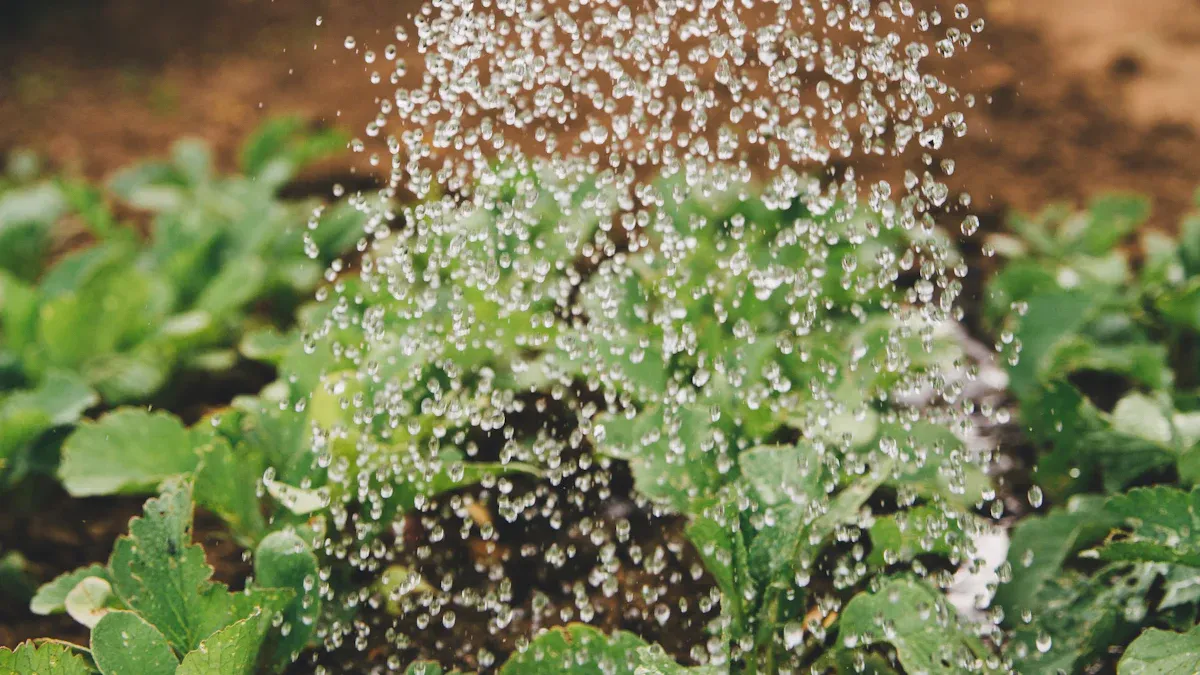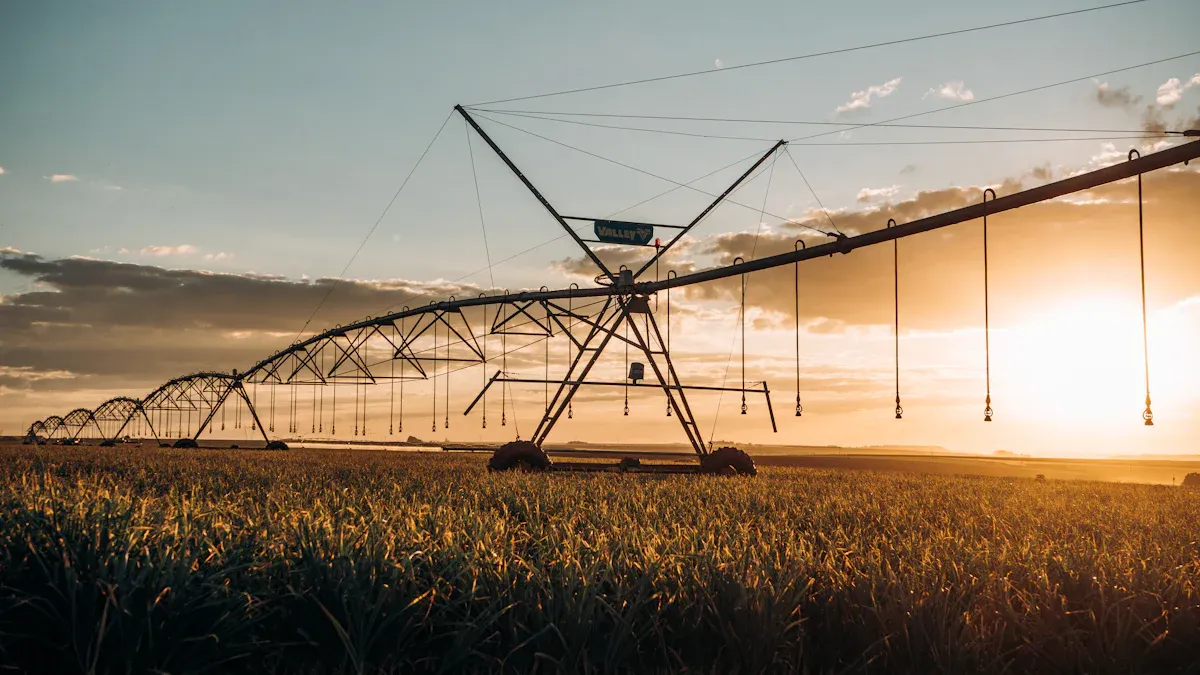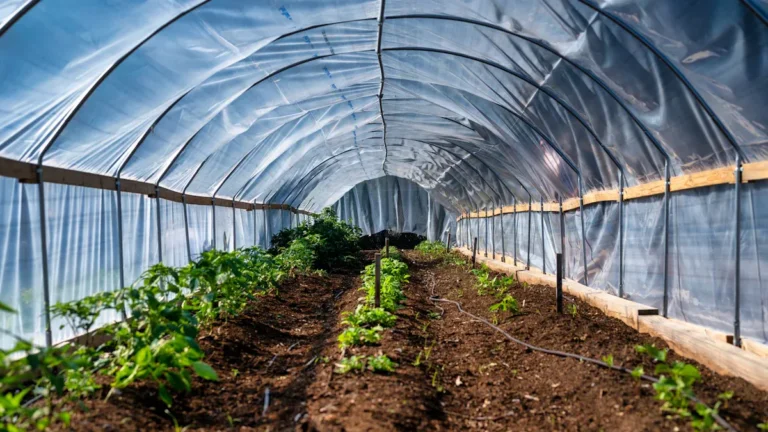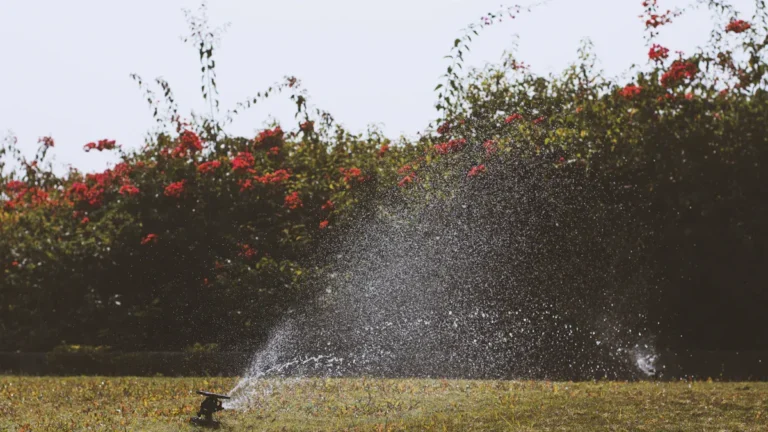How to Select the Most Efficient Irrigation System for Your Crops
Optimize agricultural irrigation by choosing the right system for your crops. Consider water availability, soil type, and crop needs to boost yields sustainably.

Efficient irrigation systems transform agricultural irrigation by boosting crop health and conserving water. Choosing the right system increases yields while reducing water consumption. For example, optimal irrigation scenarios can improve production by up to 123.1% and decrease the water footprint by over 51%. Tailoring your irrigation to soil and water conditions ensures sustainable farming success.
Key Takeaways
Picking the right irrigation system helps crops grow better and saves water. Match your system to your soil and water needs for great results.
Drip irrigation works well for valuable crops. It saves water and boosts crop growth, making it a good option for many farmers.
Think about your budget and how much care the system needs. Modern systems like DianHuai save money over time and need less work.
Types of Irrigation Systems

Selecting the right irrigation system is crucial for optimizing water use and ensuring healthy crop growth. Below, you will find an overview of the most common irrigation systems and their unique features.
Surface Irrigation
Surface irrigation is one of the oldest and simplest methods. Water flows across the soil surface to reach crops, relying on gravity for distribution. This method works best for flat fields with uniform soil types. Farmers often use it for crops like rice, wheat, and sugarcane. Однако, surface irrigation can lead to water loss through evaporation and runoff if not managed properly.
Tip: To improve efficiency, consider leveling your fields and using furrows or basins to control water flow.
Sprinkler Irrigation
Sprinkler irrigation mimics natural rainfall by spraying water over crops through a network of pipes and sprinklers. This system suits a variety of crops and terrains, including uneven fields. It provides better water coverage compared to surface irrigation. For example:
Coefficient of Uniformity (CU) values reach 86.7% for square systems and 87.3% for triangular systems at 200 kPa.
Distribution Uniformity (DU) highlights how evenly water is applied, ensuring crops receive adequate hydration.
Sprinkler systems reduce water loss from evaporation and wind drift, making them a popular choice for agricultural irrigation.
Drip Irrigation
Drip irrigation delivers water directly to the root zone of plants through a network of tubes and emitters. This method minimizes water waste and ensures precise application. Research highlights its effectiveness:
Study | Crop | Water Savings | Yield Improvement |
|---|---|---|---|
Suryavanshi et al. | Wheat | N/A | Increased yields compared to other methods |
Zhang et al. | Maize | 57% reduction | Yield enhanced by 4.3–15% |
Raina et al. | Tomato | 54% | 40% higher fruit yield |
Mehriya et al. | Cumin | 39.04% | Maximum water-use efficiency of 5.7 kg hm−1 |

Drip irrigation is ideal for high-value crops like tomatoes, grapes, and strawberries. It also supports sustainable farming by conserving water and reducing soil erosion.
Hybrid Systems
Hybrid systems combine two or more irrigation methods to maximize efficiency. For instance, you might use drip irrigation for high-value crops and sprinkler systems for larger fields. These systems offer flexibility, allowing you to adapt to different crop types and field conditions. Hybrid systems are particularly useful for farms with diverse agricultural irrigation needs.
Advanced Systems like DianHuai Irrigation
The DianHuai Irrigation System represents the pinnacle of modern irrigation technology. Designed for large-scale agricultural irrigation, it ensures uniform water distribution and minimizes losses from evaporation, wind drift, and soil erosion. This system adapts to various climates and soil conditions, making it a versatile choice for farmers worldwide.
С 20 years of expertise, DianHuai provides tailored solutions that optimize water use and enhance crop productivity. Its advanced features support sustainable farming practices while boosting yields. Farmers in over 185 countries trust DianHuai for its reliability and efficiency.
Discover the DianHuai System
Explore how the DianHuai Irrigation System can enhance your crop yield and sustainability.
Note: Investing in advanced systems like DianHuai can significantly improve your farm’s water management and overall productivity.
Key Factors to Consider

When selecting an irrigation system, you must evaluate several critical factors to ensure efficiency and sustainability. These considerations will help you tailor your system to your farm’s unique needs.
Water Availability and Source
Water availability and its source play a pivotal role in determining the most suitable irrigation system. Groundwater serves as the primary source for irrigation in regions like the High Plains, supported by the High Plains Aquifer. In contrast, surface water dominates in the western U.S., accounting for 46% of irrigation water. Однако, surface water reliability decreases during droughts, as seen in California, where agricultural deliveries dropped by 50% к 70% during recent drought periods. You should assess the reliability of your water source and consider systems like drip or DianHuai irrigation, which minimize water loss and optimize usage.
Tip: If your water source is prone to seasonal fluctuations, advanced systems like DianHuai can help maintain consistent irrigation.
Soil Type and Drainage
Soil texture and drainage capacity significantly impact irrigation efficiency. Sandy soils drain quickly, requiring frequent watering, while clay soils retain water longer but may lead to waterlogging. Studies highlight the importance of understanding soil infiltration rates to optimize irrigation. For example:
Study | Findings |
|---|---|
Lu et al. (2019) | Emphasized infiltration characteristics for water use efficiency. |
AL-Kayssi & Mustafa | Highlighted the need for accurate infiltration data for sprinkler systems. |
Nie et al. (2019) | Showed how soil texture affects border irrigation efficiency. |
Mirzaee et al. (2014) | Demonstrated the necessity of accurate models for managing water resources. |
Bayabil et al. (2019) | Provided insights into applying infiltration models in hydrologic modeling. |
Understanding your soil type allows you to select an irrigation system that complements its drainage properties, ensuring water reaches the root zone effectively.
Crop Type and Water Needs
Different crops have varying water requirements, which influence your choice of irrigation system. Research comparing crop water use (CWU) highlights the importance of tailoring irrigation to specific crops. For instance, high-value crops like tomatoes and strawberries benefit from drip irrigation due to its precision and water-saving capabilities. On the other hand, crops like rice or wheat may thrive with surface irrigation. By aligning your irrigation system with your crop’s water needs, you can enhance productivity and conserve resources.
Note: Advanced systems like DianHuai offer customizable settings to meet the diverse water needs of multiple crops on the same farm.
Budget and Installation Costs
Your budget determines the type of irrigation system you can afford. Initial costs vary widely, as shown below:
Irrigation System Type | Initial Cost | Lifespan |
|---|---|---|
Above-Ground | Under $120 | 3-5 years |
In-Ground | $3,500-$15,000 | 20+ years |
Smart irrigation systems, while more expensive upfront, can reduce water usage by 50-70%, saving nearly 9,000 gallons of water annually. Over 11 years, these systems can yield net benefits of $33,121 per irrigated acre. You should weigh the long-term savings against the initial investment to make an informed decision.
Small Yards (up to 1/4 acre): $1,500 к $3,000.
Medium Yards (1/4 к 1/2 acre): $3,000 к $5,000.
Large Yards (1/2 acre or more): $5,000 and up.
Maintenance Requirements
Maintenance frequency and costs vary among irrigation systems. Drip systems require regular cleaning to prevent clogging, while sprinkler systems need periodic checks for leaks and nozzle blockages. Surface irrigation, though simpler, may demand field leveling to prevent uneven water distribution. Application efficiencies range from 50% к 99%, depending on the system, with water loss occurring through evaporation, runoff, or deep percolation. Choosing a system with manageable maintenance requirements ensures long-term efficiency and cost-effectiveness.
Tip: Advanced systems like DianHuai are designed for durability and minimal maintenance, making them a reliable choice for large-scale agricultural irrigation.
Pros and Cons of Different Irrigation Systems

Surface Irrigation: Advantages and Disadvantages
Surface irrigation offers simplicity and cost-effectiveness, making it a popular choice for many farmers. Однако, its efficiency depends heavily on proper management.
Aspect | Surface Irrigation | Sprinkler Irrigation |
|---|---|---|
Can be less than 50% if not managed well | Generally higher than surface systems | |
Major Loss Mechanisms | Deep percolation, surface runoff | Loss from six potential sources |
Evaporation Loss | Contributes to water loss | Generally lower due to direct application |
Management Techniques | Requires careful management to minimize losses | More efficient with less management required |
Surface irrigation works best for flat fields with uniform soil types. Однако, water loss through evaporation and runoff can reduce its effectiveness. Proper field leveling and controlled water flow can mitigate these issues.
Sprinkler Irrigation: Advantages and Disadvantages
Sprinkler irrigation provides uniform water distribution and suits various terrains. Its efficiency makes it ideal for agricultural irrigation in areas with uneven fields.
Turfgrass generates approximately $100 million annually in New Mexico, ranking as the second-largest cash crop after alfalfa.
Subirrigation methods save up to 50% of water compared to traditional systems, with some reports indicating a 90% reduction in water use.
Sprinkler systems require regular maintenance to prevent nozzle blockages and leaks. Despite this, their ability to reduce evaporation loss and provide consistent hydration makes them a reliable option for many crops.
Drip Irrigation: Advantages and Disadvantages
Drip irrigation excels in precision and water conservation. It delivers water directly to the root zone, minimizing waste and enhancing crop yields.
Increases crop yields by 20% к 90%.
Minimizes water loss due to evaporation and runoff.
This system is ideal for high-value crops like tomatoes and strawberries. Однако, regular cleaning is necessary to prevent clogging, which can impact efficiency.
Hybrid Systems: Advantages and Disadvantages
Hybrid systems combine the strengths of multiple irrigation methods, offering flexibility and efficiency.
Aspect | Hybrid Irrigation Systems | Conventional Irrigation Methods |
|---|---|---|
Reduced energy costs and investment costs through soil sensors | Higher overall costs due to fixed irrigation investments and energy costs | |
Water Conservation | Increased irrigation water use efficiency (IWUE) | Less efficient water use, leading to potential over-irrigation |
Yield Variability | Lower yield variability due to precise water application | Higher yield variability due to less precise irrigation methods |
Environmental Benefits | Improved flow of adjacent water courses and reduced runoff | Potential negative impacts on local water sources due to overuse |
Hybrid systems reduce energy costs and improve water conservation, making them suitable for farms with diverse crops. Their adaptability ensures precise water application, enhancing yield consistency.
DianHuai Irrigation System: Advantages and Disadvantages
The DianHuai Irrigation System represents advanced agricultural irrigation technology. Its uniform water distribution minimizes losses from evaporation, wind drift, and soil erosion.
This system adapts to various climates and soil conditions, ensuring optimal water use and crop productivity. Farmers benefit from its durability and minimal maintenance requirements. С 20 years of expertise, DianHuai supports sustainable farming practices while boosting yields. Its reliability has earned the trust of farmers in over 185 страны.
Note: Investing in DianHuai ensures efficient water management and long-term productivity for large-scale agricultural operations.
Step-by-Step Guide to Choosing the Right System

Assess Your Water Source and Availability
Understanding your water source is the first step in selecting an efficient irrigation system. Evaluate the consistency and volume of your water supply using reliable methodologies. For instance, water supply forecasting predicts streamflow volume based on winter snowpack measurements. This approach works well in regions where snowmelt significantly contributes to water availability. Alternatively, a water resources accounting method calculates internal and external renewable water resources to determine total availability. These assessments help you identify systems like drip or advanced options such as ДяньХуай, which optimize water use in areas with limited resources.
Tip: If your water source fluctuates seasonally, consider systems designed to minimize water loss and maintain consistent irrigation.
Analyze Your Soil and Crop Needs
Soil characteristics and crop water demand play a critical role in irrigation system selection. Use soil moisture sensors to measure water retention and drainage capacity. Combine this data with crop water productivity assessments to determine the most suitable system. For example, sandy soils may benefit from frequent, low-volume irrigation like drip systems, while clay soils require less frequent watering. Tailoring your irrigation to these factors ensures efficient water use and supports sustainable farming practices.
Determine Your Budget
Your budget influences the type of irrigation system you can afford. Compare installation costs and potential returns on investment. For example:
Metric | Value |
|---|---|
Positive, low, or negative | |
Internal Rate of Return (IRR) Before Tax | 0 |
Internal Rate of Return (IRR) After Tax | 0 |
While advanced systems may have higher upfront costs, their long-term savings and efficiency often justify the investment. Evaluate your financial capacity and prioritize systems that align with your economic goals.
Compare System Options Based on Efficiency and Maintenance
Not all systems offer the same efficiency or maintenance requirements. Drip irrigation minimizes water waste but requires regular cleaning to prevent clogging. Sprinkler systems provide uniform coverage but need periodic checks for leaks. Advanced systems like DianHuai combine high efficiency with minimal maintenance, making them ideal for large-scale operations. Assess each system’s performance and upkeep needs to find the best fit for your farm.
Consult Experts or Local Resources for Recommendations
Leverage local expertise and resources to make informed decisions. Professionals familiar with regional conditions can recommend systems that comply with local regulations and address environmental challenges. Customer reviews also provide valuable insights into service quality and system reliability. Кроме того, inquire about warranties on parts and labor to ensure long-term support and peace of mind.
Note: Collaborating with experts ensures you select an irrigation system tailored to your specific needs, enhancing productivity and sustainability.
Choosing the right irrigation system ensures efficient water use and healthier crops. Tailored systems reduce water consumption and boost yields, as shown below:
Location | Water Usage Reduction | Crop Yield Increase |
|---|---|---|
California | 20% | 12% |
Australia | 30% | 20% |
Evaluate your water source, soil type, and crop needs to make an informed decision. An efficient system promotes sustainable farming and long-term productivity.
Часто задаваемые вопросы
What is the most cost-effective irrigation system for small farms?
Drip irrigation is often the most cost-effective for small farms. It minimizes water waste, reduces operational costs, and ensures precise water delivery to crops.
How do I maintain my irrigation system for long-term efficiency?
Regularly inspect for leaks, clean filters, and unclog emitters. Advanced systems like DianHuai require minimal maintenance, making them ideal for long-term use.
Tip: Schedule routine maintenance checks to prevent costly repairs and ensure optimal performance.
Can I use multiple irrigation systems on one farm?
Yes, hybrid systems allow you to combine methods like drip and sprinkler irrigation. This flexibility helps meet the diverse water needs of different crops efficiently.




